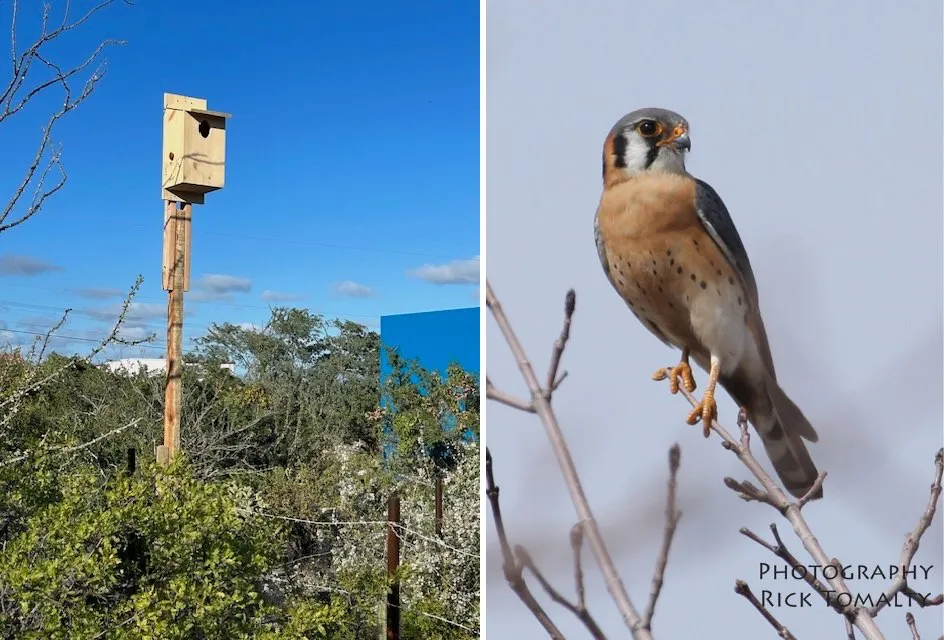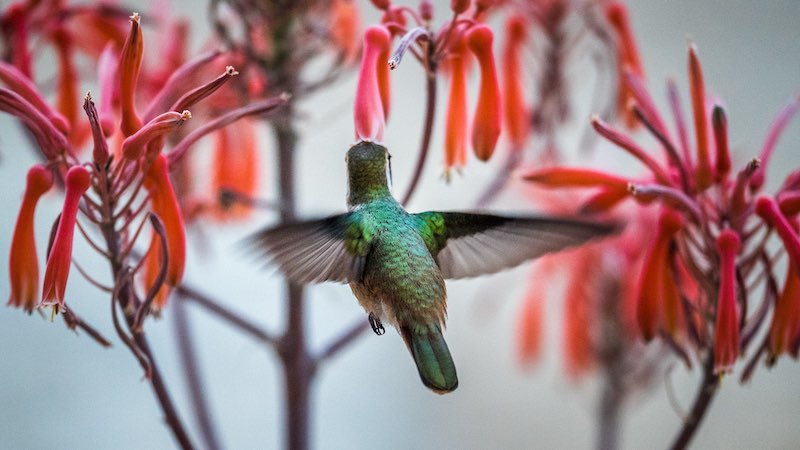In the last two to three years, several studies have been published in scientific journals suggesting that having nature, for example singing birds, in your immediate environment can lead to greater well-being and health and overall life enrichment and even a prolonging of life. Here in Baja, particularly in El Sargento and La Ventana, we not only have plenty of sun, clean salt air, and many opportunities for exercise. So, what about the singing birds, you ask? Well, take it from me…there are plenty of songbirds to listen to right here in our two villages! You just have to know how to enjoy them and bring them in closer to one’s eyes and ears. It is neither difficult nor expensive.
First and foremost, birds need fresh water in which to bathe and to drink. You do not need to buy a fancy bird bath. Just one of those foot-wide shallow plastic dishes that you place under a planter will do. It can be placed right on the ground or elevated slightly on some rocks or a sand pile. Due to a combination of the drying hot sun and the vigorous splashing by the bathing birds, you will need to refill it every two days. If you want to get fancier, it is really easy to mix some concrete and pour it into a hollowed pit in the ground to make a classy bird bath 2 or 3 feet across. Or you can go one step further and cement your bath onto a pile of large beach rocks to get it off the ground. The water level should not be deep; just two or three inches will do. A word of caution though — try not to locate your bird bath too close to vegetation that might provide ambush cover for the feral cats prowling about in our villages.
As for bird food, there are a couple of options. You can buy chicken scratch by the pound at either of the local grocery stores. I buy mine in bulk for a good price at Semillas Y Cereales Guadalajar on Calle Aquiles Serdan in downtown La Paz. I keep the bag in a decent plastic bin (a metal garbage can would be ideal) to avoid problems with rodents. Offering the seed to ground-feeding birds can range from throwing out a couple of handfuls on the ground in a spray motion each morning to laying it out on a wooden or plastic tray (like a garbage can lid) sitting on a post of some kind. Yes, you might attract 10 to 30 white-winged doves, but you might also bring in California quail, house finches, lark sparrows, green-tailed towhees, and ground-doves. I have indeed acquired a flock of 30 or more doves, but I look upon those greedy birds as a giant smorgasbord for the fairly common Cooper’s hawks which love to dine upon them. Another seed worth offering is gray striped sunflower, a food preferred by northern cardinals, black-headed grosbeaks, gila woodpeckers, and California scrub-jays.
And then there are the hummingbirds. We mostly get Costa’s hummingbirds here. Putting out a feeder with red parts or even just a red ribbon tied onto it and filled with a sugar solution will make them quite happy. Just bring to a boil 4 cups of drinking water and one cup of white or cane sugar and then let it sit until cooled. You can store it in the fridge for several days. You will need to put out more than one hummer feeder; otherwise, they will fight to exhaustion over them. Keep in mind that Scott’s and hooded orioles, gila woodpeckers and gilded flickers also love that sweetened water. They will find all sorts of clever ways to hang on your sugar feeder and drain it in an hour or so.
Speaking of orioles and flickers, there is a more natural way to attract them. Plant plenty of aloe vera plants with either the orange or yellow flowers filled with nectar….the birds absolutely adore them! In fact, if you are building a house here, try to keep as much natural vegetation in place as possible. You will not regret it. My greatest pleasure each day is sitting out on the back patio with a steaming cup of coffee at sunrise with my wife and watching more than 20 species of birds fly in and around my yard feeding their faces and splashing about and drinking in my baths. You just have to offer them a nice safe restaurant with the right foods and beverages!

